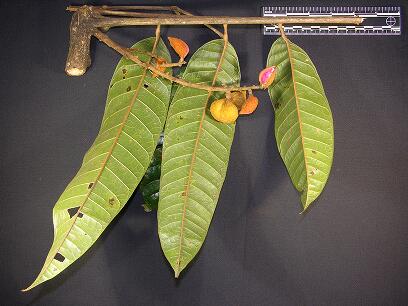Family: Burseraceae

Kingdom: Plantae Rank: Family Parent: Sapindales Status: Valid
Common Names:
- Burseraceae - English, United States of America
Vegetative Morphology
Habit: Small to large trees, sometimes shrubs.
Main axis: Some species develop aerial roots.
Leaves: Leaves alternate, imparipinnately compound or sometimes unifoliate; the lateral leaflets opposite to subopposite; petiolules often pulvinate.
Exudate: Resin clear and drying as white to yellow or black powder or milky and drying in yellowish globules, sometimes flammable.
Reproductive Morphology
Inflorescence: Inflorescence axilary or terminal, panicles or rarely spikes, indeterminate.
Flowers: Flowers actinomorphic, unisexual or sometimes bisexual, 3-6-merous; sepals fused, lobed or split, the lobes valvate; corolla free or somewhat fused, valvate; stamens didynamous or in two series, free to fused, inserted a base of intrastaminal nectary disk; staminate flowers often with reduced pistillode; pistillate flowers with staminodia, sometimes staminodia persisting in fruit, the ovary superior, 2-5-locular, the style 1, apical, sometimes minutely lobed, stigmas same number as locules or one and with same number of lobes as locule, placentation axile.
Fruit: Fruit typically a pseudocapsule with 1-5 locules, dehiscent or indehiscent, or a drupe.
Seeds: Seeds one to several per fruit, naked, arillate, or winged.
Other
Uses: Resin flammable in some species and used as a substitute for petroleum products. Various species important for lumber.